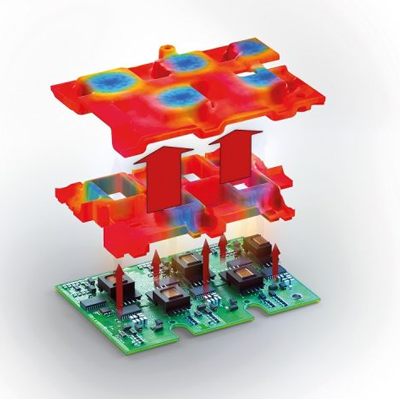Thermally conductive elastomer for EV parts
Freudenberg Sealing Technologies (FST) has developed a thermally conductive elastomer that combines seemingly contradictory properties: It conducts heat well, but is also electrically insulating. FST is already testing initial applications for charging sockets, control units and batteries in electric vehicles.
Materials generally combine electrical and thermal conductivity or insulate against both electrical current and heat. Freudenberg’s elastomer merges relatively high heat capacity with electrically insulating properties by combining silicone rubber with special fillers. The innovative material will be used primarily in electric car components, since semiconductors and other current-carrying elements are never completely lossless. Any electrical energy that is not used for computing or switching becomes waste heat that must be dissipated into the ambient air or a cooling system. Electronic components may thus be mounted in a thermally conductive aluminum housing, for example, which dissipates the heat either via cooling water or convection. The closer the circuit board is positioned to the heat sink, the more efficient is the heat transport. The heat conductivity can be reduced by roughness in material surfaces, even at levels that are invisible to the human eye.Freudenberg decided to use silicone, rarely used in car manufacturing, as the base material because its material retains its properties over a very high temperature range, from -50°C to +250°C, but it can be deformed with relatively low force.

